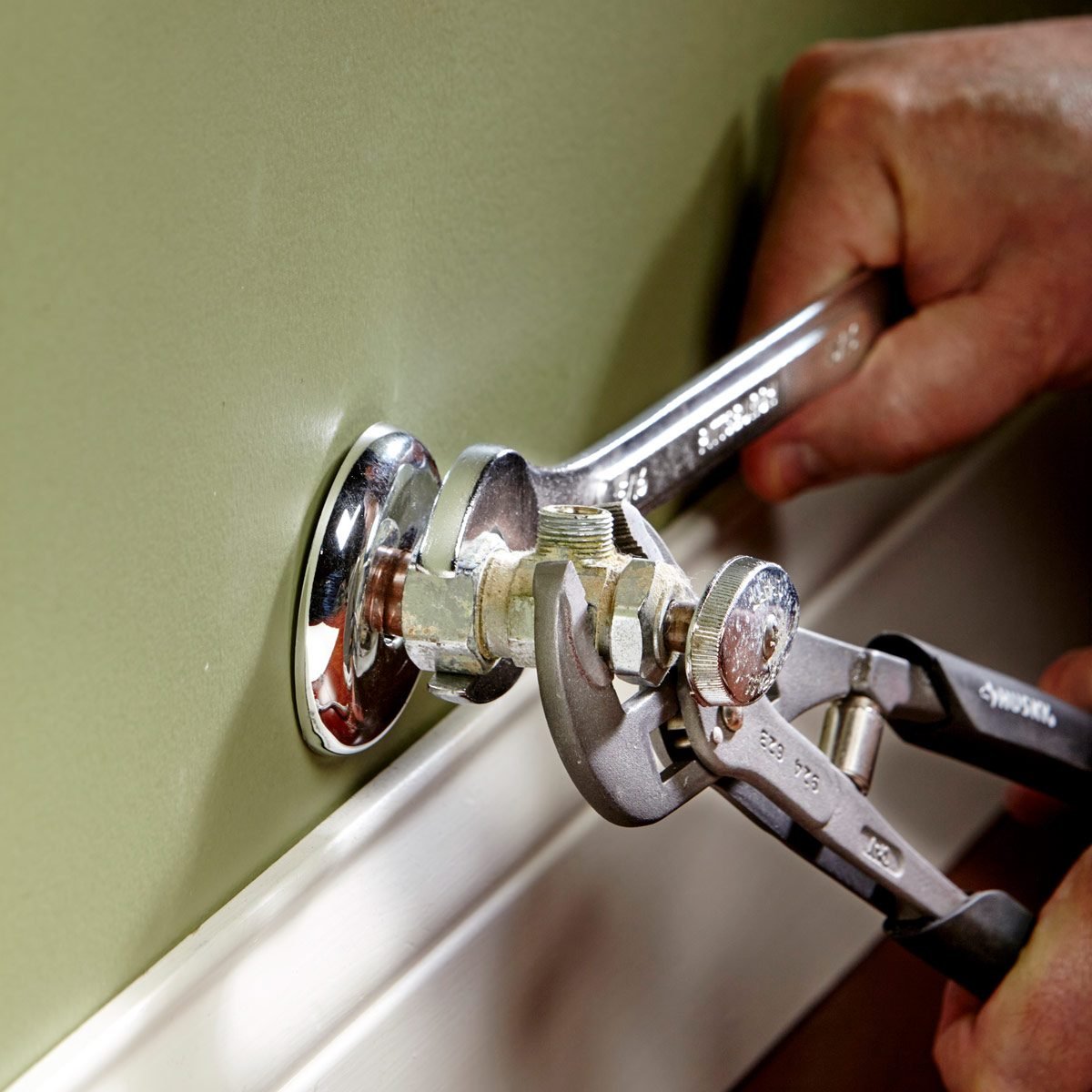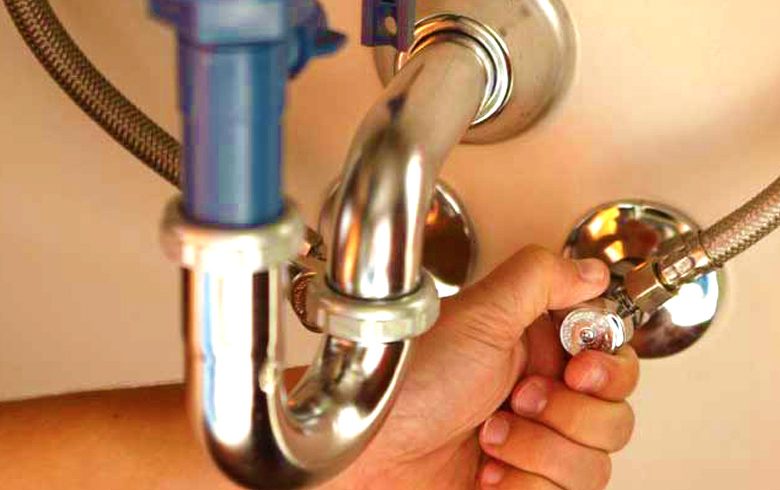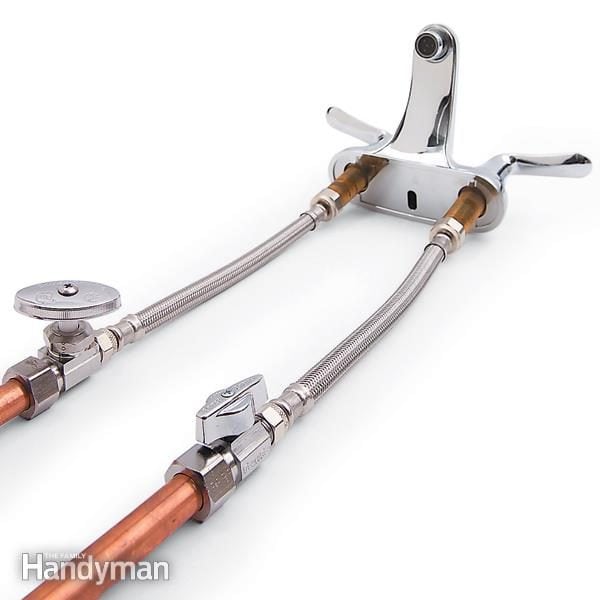Bathroom Sink Valve Replacement
Signs that Your Bathroom Sink Valve Needs Replacement
First, let’s find out the signs that your bathroom sink valve might be crying out for replacement.
- Leaking or Dripping: One of the most obvious signs that your bathroom sink valve needs replacement is if you notice any leaking or dripping. If you find water pooling around the base of the faucet or notice a constant drip, it may be a sign that the valve is worn out or damaged. Ignoring this issue can lead to water wastage and potential damage to your bathroom fixtures and cabinets.
- Low Water Pressure: If you experience a sudden decrease in water pressure when using your bathroom sink, it could indicate a faulty valve. Over time, mineral deposits and debris can build up within the valve, restricting water flow and causing low water pressure. Replacing the valve can restore proper water pressure and improve the overall functionality of your sink.
- Difficulty in Turning On or Off: If you find it increasingly difficult to turn the faucet handle to either open or close the water flow, it could be a sign that the valve is worn out. This can be caused by internal components becoming loose or damaged, making it harder to control the water flow. Replacing the valve will ensure smooth operation and prevent any further damage.
- Corrosion or Rust: Another sign that your bathroom sink valve may need replacement is the presence of corrosion or rust. Over time, water and moisture can cause metal components to corrode or rust, compromising the integrity of the valve. If you notice any signs of rust or corrosion on the valve or surrounding areas, it is important to consider replacing it to prevent further deterioration.
- Constant Repair Needs: If you find yourself frequently repairing the bathroom sink valve, it may be more cost-effective to replace it altogether. Continuous repairs can be a sign that the valve is reaching the end of its lifespan or that there are underlying issues with the valve or plumbing system. Opting for a replacement can save you from ongoing repair expenses and provide a long-term solution.

Steps to Replace a Bathroom Sink Valve
1. Turn off the water supply: Before starting the replacement process, it is important to turn off the water supply to the bathroom sink. Locate the shut-off valve under the sink or at the main water supply line and turn it clockwise until it is fully closed.
2. Drain the water lines: To prevent any water from spilling out during the replacement, it is necessary to drain the water lines. Turn on the faucet and let the water run until it stops flowing. This will help remove any remaining water from the pipes.
3. Disconnect the supply lines: Using an adjustable wrench, loosen the nuts that connect the supply lines to the sink valve. Once loosened, carefully remove the supply lines from the valve. Make sure to have a towel or bucket nearby to catch any water that may drip out.
4. Remove the old valve: Locate the retaining nut that holds the old valve in place. Using a wrench, loosen and remove the nut. Once the nut is removed, pull the old valve out of the sink.
5. Install the new valve: Take the new valve and insert it into the hole in the sink. Make sure it is properly aligned and secure. Place the retaining nut back onto the valve and tighten it with a wrench until it is snug.
6. Reconnect the supply lines: Attach the supply lines back onto the valve and tighten the nuts with an adjustable wrench. Make sure they are secure and do not leak.
7. Turn on the water supply: Once the new valve is installed and all connections are secure, turn on the water supply. Slowly open the shut-off valve or main water supply line to allow water to flow into the bathroom sink. Check for any leaks and make sure the water is flowing properly.
8. Test the valve: Turn on the faucet and let the water run for a few minutes to ensure the new valve is functioning correctly. Check for any leaks or drips around the valve or supply lines. If everything looks good, the replacement process is complete.
Tips for Choosing the Right Bathroom Sink Valve Replacement
Consider the type of valve: There are different types of valves available for bathroom sink replacements, such as ball valves, cartridge valves, and compression valves. Each type has its own advantages and disadvantages. It is important to understand the type of valve you currently have and choose a replacement that is compatible with your existing plumbing system.
Check the size and fitting: Before purchasing a replacement valve, measure the size and fitting of your existing valve. This will ensure that the replacement valve fits properly and does not cause any leaks or plumbing issues. You may need to consult a professional plumber to determine the correct size and fit if you are unsure.
Quality and durability: Look for a bathroom sink valve replacement that is made from high-quality materials and is durable. A valve made from brass or stainless steel is often a good choice as these materials are corrosion-resistant and long-lasting. Investing in a high-quality valve will ensure that it functions properly and lasts for a long time.
Consider the brand: Choosing a reputable brand for your bathroom sink valve replacement is important. Well-known brands often have a track record of producing reliable and efficient products. Reading customer reviews and seeking recommendations from professionals can help you determine which brands are trustworthy and offer good quality replacement valves.
Seek professional advice: If you are unsure about which bathroom sink valve replacement to choose, it is always a good idea to seek advice from a professional plumber. They can assess your specific plumbing needs and recommend the best valve for your bathroom sink. Hiring a professional plumber to install the replacement valve can also ensure that it is done correctly and prevents any future plumbing issues.
Price and warranty: Compare prices of different bathroom sink valve replacements to ensure that you are getting a fair deal. However, keep in mind that the cheapest option may not always be the best in terms of quality and durability. Additionally, check if the replacement valve comes with a warranty. A warranty can provide you with peace of mind knowing that you can get a replacement or repair if any issues arise with the valve.
How to Replace a Shutoff Valve (DIY) Family Handyman
How to Replace a Shutoff Valve (DIY) Family Handyman
Install Shut Off Valve Under Sink u0026 Replace Faucet – Mobile Home
How to replace an old soldered faucet valve A fine
How to Install a BrassCraft Solvent Weld Valve onto a CPVC Supply Line
Types of Water Shut-Off Valvesu200b
Replace Bathroom Sink Shut Off Valve
Stop Plumbing Leaks With Ball-Type Shutoff Valves (DIY) Family
Related Posts:
- Bathroom Sink Faucet Hose
- Mini Pedestal Bathroom Sinks
- Bathroom Sink Drain Assembly Instructions
- Japanese Style Bathroom Sink
- Bathroom Sink Storage Ideas
- Bathroom Sink Leak Repair
- Commercial Bathroom Sink Countertop
- Creative Bathroom Sink Ideas
- Kohler Bathroom Sink Drain Parts
- Rustic Bathroom Sink Bowls









